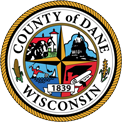Take Action this Spring to Support Dane County’s Pollinators
May 23, 2024
Land & Water Resources
Take Action this Spring to Support Dane County’s Pollinators
Contacts:
Wade Moder
Natural Resources Educator, Dane County Extension
moder.wade@countyofdane.com
608-224-3710
Susan Sandford
Strategic Engagement Coordinator, Dane County Land & Water Resources Department
Sandford.susan@countyofdane.com
(608) 669-1816
MADISON, WI – May 23, 2024 – People aren’t the only ones who hunker down for the winter – pollinators do too! Spring is a great time to think about simple actions you can take to help support pollinators.
“Pollinators like bees and butterflies are key to supporting natural ecosystems,” said acting Dane County Executive Patrick Miles. “We encourage Dane County residents to consider applying these pollinator-friendly practices to their yards this spring. Together, we can make a difference and support area pollinators.”
In recent decades, pollinator populations have declined due to habitat loss, nutritional deficiency, pests, pathogens, insecticides, and extreme weather events. The good news is that there are several actions you can take to help pollinators, including:
Assessing the quality of the pollinator habitat you have at your home, school, community center, or any other place you love. The Wisconsin Online Pollinator Habitat Assessment can help you evaluate a site and identify actions you can take to support pollinator habitat.
Providing nesting habitat. Pollinators will build nests and overwinter in undisturbed bare ground, leaf litter, dead wood (downed logs), rock piles, and standing dead twigs/stems. Leave flower stalks intact over the winter and when pruning dead stalks in the spring, leave approximately 8-24” for future nesting habitat (Xerces Society).
Planting native plants. Pollinators forage for pollen and nectar on the blooming flowers of herbaceous plants, shrubs, and even trees from April to October. Planting native species that bloom in early spring are incredibly helpful for pollinators, as food sources can be scarce early in spring. Native plants and seeds can be purchased from local and regional plant nurseries that specialize in native plants, as well as the Wisconsin Arboretum and Plant Dane plant sales. Schools and community groups can apply to receive free native plants from Dane County.
Several libraries in the county have free native seed available each fall so the community can take home and plant native seeds. This includes several Madison Public Libraries, the Monona Public Library and the Oregon Public Library. Check with the library to make sure they still have seeds available before you make a trip.
Limiting insecticide and herbicide use and collaborating with your neighbors to lower their use in your area. Pollinators may be exposed to pesticides in numerous ways, including direct contact with spray residue on plants, through ingestion of contaminated pollen and nectar, or through exposure to contaminated nesting sites or materials (Xerces Society).
Developing a pollinator-friendly lawn. There are several early blooming flowers that often pop up in lawns that aren’t regularly treated with herbicides. In some places, these may be the only nectar sources available to bees and other emerging pollinators this time of year. Waiting longer in the spring before mowing, mowing less often, raising the height of your mower, and leaving patches of flowers in your yard is a great first step to helping pollinators. If your lawn doesn’t have flowering plants, try adding native wildflowers, such as self-heal or native violets, for an early blooming option.
Background:
Pollinators are animals that visit flowering plants and transfer pollen from flower to flower, thus aiding plant reproduction. North American pollinators include bees, butterflies, moths, flower flies, beetles, hummingbirds, and in some parts of the southwestern U.S. and Mexico, nectar-feeding bats. Bees purposefully collect pollen as a protein source for their offspring, making them very efficient pollinators.
Pollinators are essential to our environment, as an estimated 87% of flowering plants globally rely on pollinators. They help make our ecosystems viable and provide us with food, as 150 food crops in the U.S. depend on pollinators (USDA). Odds are, you can thank a pollinator for the last meal you ate.
###
About Dane County Land & Water Resources Department
The Dane County Land & Water Resources Department works to protect and enhance Dane County’s natural, cultural, and historic resources. It provides the county’s residents with a broad array of accessible, high quality resource-based recreational services and facilities, and supports residents, communities, local governments and other agencies and organizations in their resource management and protection activities.
About UW-Madison Extension Dane County
We teach, learn, lead and serve, connecting people with the University of Wisconsin, and engaging with them in transforming lives and communities.

